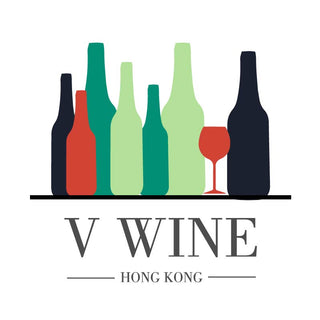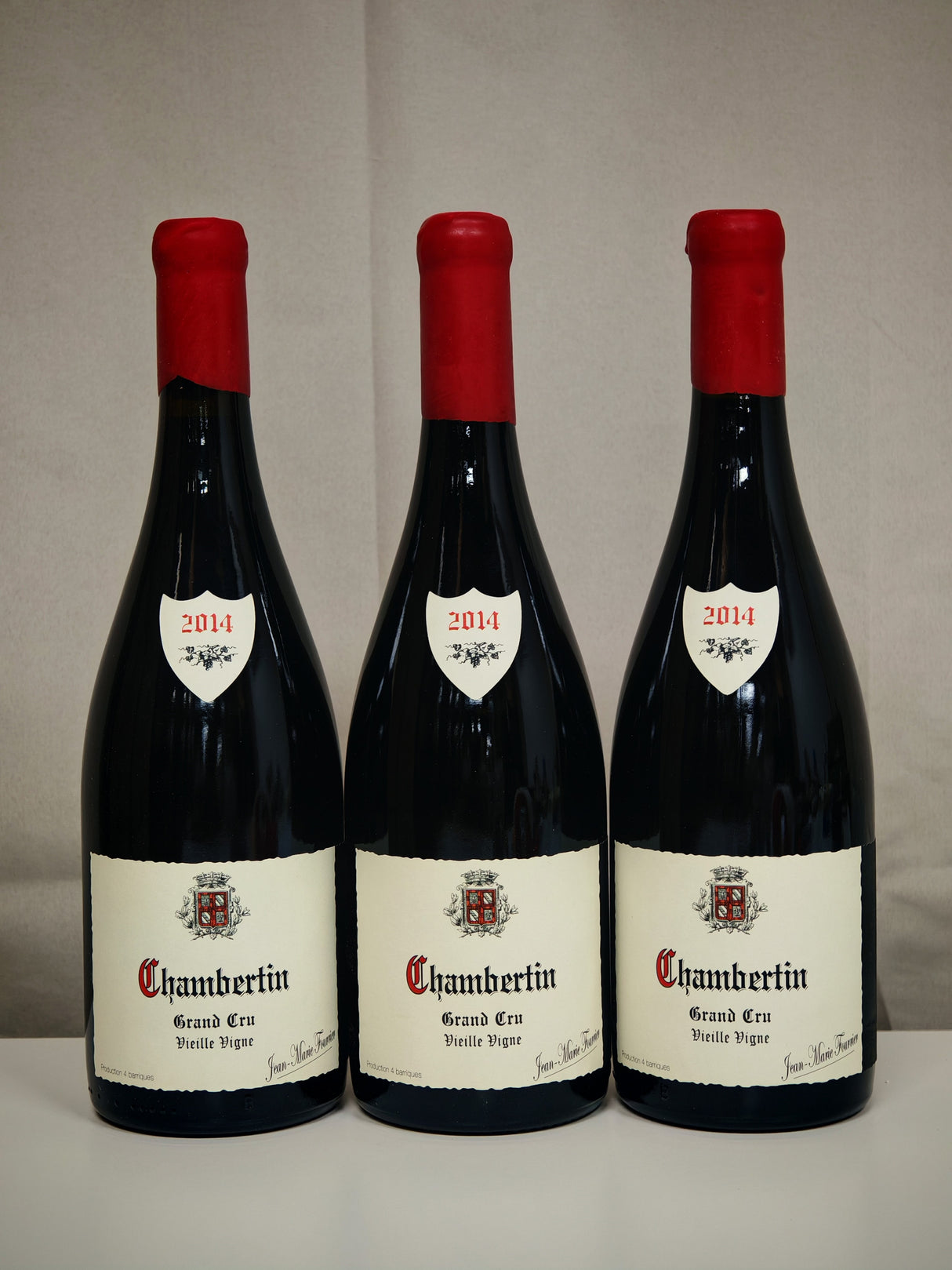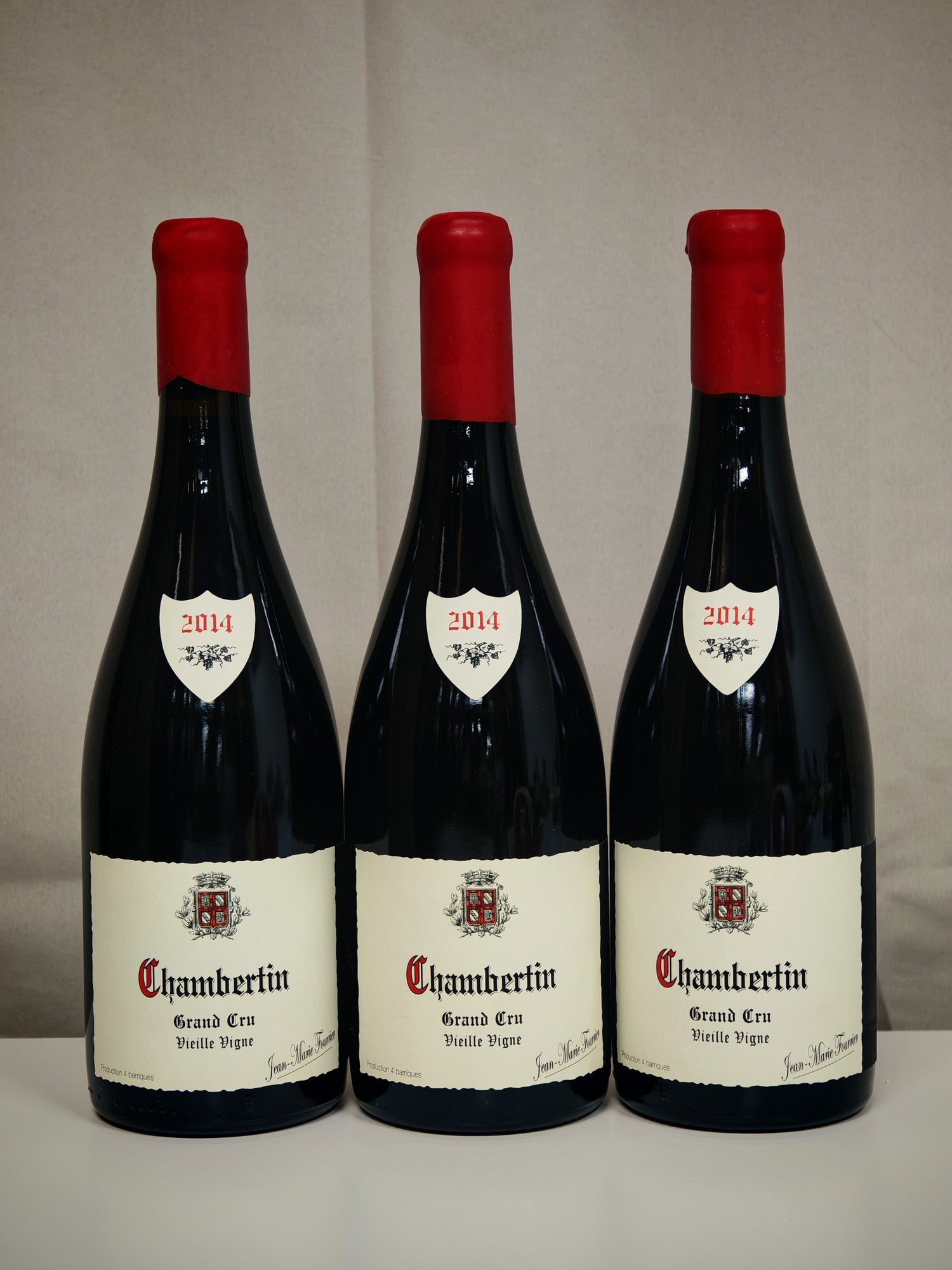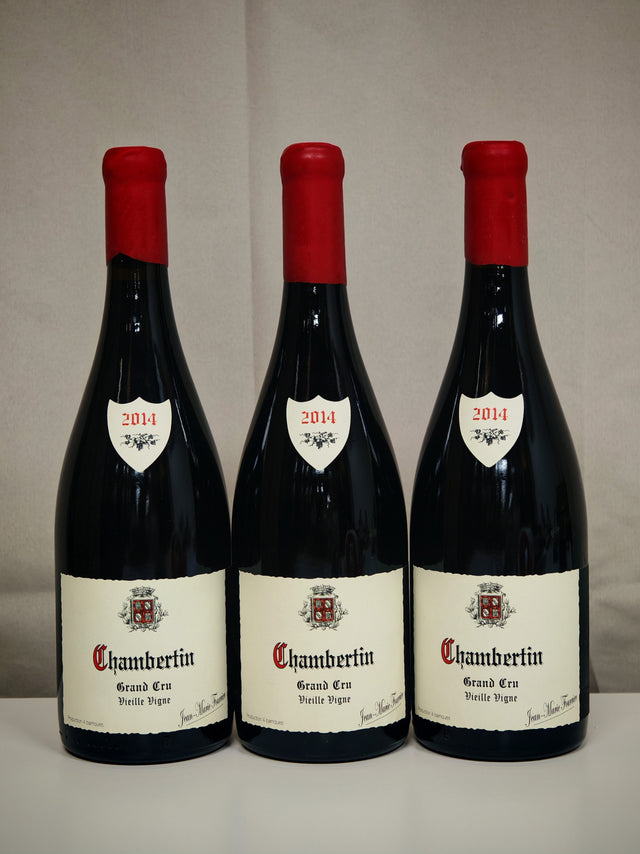2014 Jean Marie Fourrier, Chambertin 750ml
Jean-Marie Fourrier is the négociant arm of Domaine Fourrier, first introduced in the 2011 vintage. Fourrier established the operation in 2011, looking to expand his Burgundy offering yet not wishing to lumber his children with the massive debt that purchasing additional vineyards would incur. The range includes several Grands Crus: Clos de Vougeot, Latricières-Chambertin, Mazoyères-Chambertin, Clos de Bèze and Chambertin. As with the domaine wines, the trademark here is incredible purity – and very high quality.
In April 2020, Fourrier also took over Australia's iconic Bass Phillip estate.
Jean-Marie Fourrier took over the family 10 hectares property from his father in the mid 1990s at the age of 23 years old. His experience was gained not only at the family domaine in Gevrey Chambertin, but while working at Domaine Drouhin in Oregon and with the legendary Henry Jayer in Vosne-Romanee. Jean Marie was involved in the making of the classic 1988 vintage chez Jayer, and his wine making philosophy is following Jayer’s practices ever since: making great wines begin in the vineyard – and he is fastidious about maintaining healthy, wellnurtured vines, and following by strict, extremely natural wine making techniques. Jean-Marie possesses an infectious enthusiasm for the wine making craft and an incredible knowledge and experience, which he is happy to share with others. It’s amazing that even during the busy days of vintage time, he finds the time to pull someone aside to point out something interesting or explain an important step in his wine making philosophy.
Domaine Fourrier’s portfolio includes holdings in few of Gevrey Chambertin’s top vineyards, where most vines are dating back to the beginning of the 20th century. His most famous holdings are the ones in Griotte Chambertin and Clos st Jacques, which vines were planted between 1902 and 1910. These wines gained already the status of “Cult Wines” amongst serious Burgundy lovers around the world, and the fact that they are being produced in extremely minute quantities does not make it any easier to acquire them. But Fourrier’s entire portfolio shares the same characteristics and their transparency of their relative terroir along their purity and finesse made them highly desired worldwide.
The fermentation room is equipped with the latest state of the art technology, but the use of these technologies is for the sole purpose of allowing the least intervention in the natural wine making process. It is incredible to see how clean the room is, even during busy vintage time. The fruit of all vineyards are similarly treated, and everything is done by gravitation till the fermentation stainless steel tanks. Even the sorting table was raised above the floor to allow free fall of the sorted berries into the destemmer, which costs extra muscle power but saving the use of conveyor belt widely used by other domains to lift the berries to the crusher. The fruit is destemmed to almost 100%, and is done in extremely low speed. This allows mainly un damaged grapes to get into the fermentation tank, to follow what Jean Marie calls “intra cellular fermentation”, to say, the majority of the fermentation process occurs inside the grape before the skin breaks completely. This was the manner Henry Jayer used in his cellar, and Jean-Marie continues to follow this tradition. Naturally, only the grapes’ natural yeasts are the ones responsible for the fermentation process, and hand pigeage technic is the only one to be utilized at Domaine Fourrier.
Jean-Marie’s wines are marked by wonderful purity, transparency, bright vibrant fruit, minimal use of sulfites and limited use of new oak (typically 20%). Bottling is done by hand at the domaine, and in order to avoid racking and adding sulfites before bottling, Jean-Marie prefers to leave the wine with the CO2 that naturally evolves during the malolactic fermentation to ward off oxygen and maintain the freshness of the wines. No fining or filtering is needed, since the wines are naturally clear after the 16-20 months aging process without racking. As the wines retain some dissolved carbon dioxide in the bottle, Jean Marie recommends decanting the wines if drank young.



